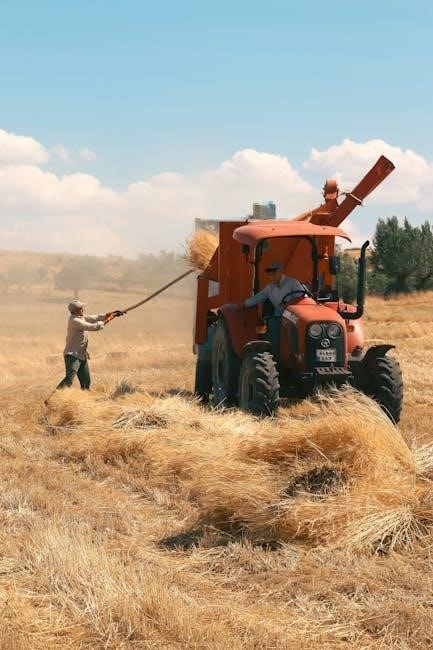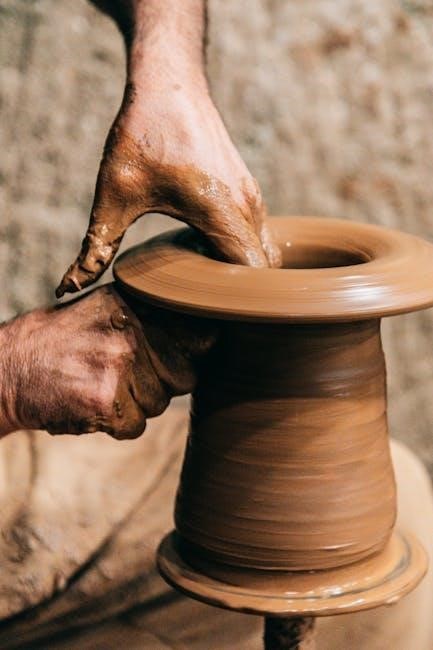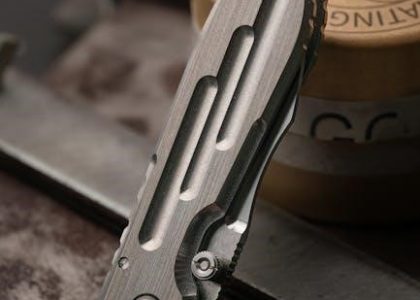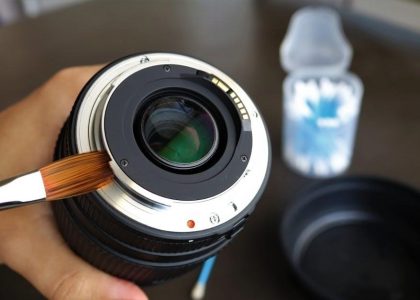Masterbuilt Turkey Deep Fryer Manual: A Comprehensive Guide
Unlock the full potential of your Masterbuilt turkey deep fryer with this comprehensive guide․ We’ll explore everything from model understanding to safety․ This guide helps ensure delicious, safely cooked turkey․ Let’s master the art of deep-fried turkey together․
Understanding Your Masterbuilt Fryer Model
Before diving into the delicious world of deep-fried turkey, it’s crucial to familiarize yourself with your specific Masterbuilt fryer model․ Masterbuilt offers a variety of electric turkey fryers, each with its own unique features and capabilities․ Identifying your model is the first step toward safe and successful operation․
Check the model number, often found on a sticker on the fryer’s base or control panel․ Once you have the model number, consult the corresponding manual․ Manuals often contain detailed diagrams and parts lists specific to your fryer․
Pay close attention to the fryer’s capacity, as this determines the maximum size of the turkey you can safely fry․ Some models can accommodate up to a 22-pound turkey, while others are designed for smaller birds․ Overloading the fryer can lead to uneven cooking and potential safety hazards․ Familiarizing yourself with your model ensures optimal performance and delicious results․
Understanding your fryer’s features allows you to confidently create perfectly cooked, golden-brown turkeys every time․
Safety Precautions Before Use
Safety should always be the top priority when using a Masterbuilt turkey deep fryer․ Before each use, carefully inspect the fryer for any signs of damage, such as frayed cords or loose connections․ Ensure the fryer is placed on a stable, level surface outdoors, away from flammable materials․
Never use the fryer indoors or in enclosed spaces․ Maintain a safe distance from buildings and other structures․ Always use caution when handling hot oil․ Wear protective gloves and eye protection to prevent burns․ Never leave the fryer unattended while in use․ Keep children and pets away from the cooking area․

Ensure the turkey is completely thawed and dry before frying to prevent dangerous oil splatters․ Never overfill the fryer with oil, and always adhere to the maximum fill line indicated in the manual․ In the event of a fire, never use water to extinguish it․ Instead, use a fire extinguisher specifically designed for grease fires․ By following these safety precautions, you can minimize the risk of accidents and enjoy a safe and delicious turkey frying experience․

Remember, a little preparation goes a long way in ensuring a safe and enjoyable cooking process․
Assembly Instructions and Initial Setup
Proper assembly and initial setup are crucial for safe and efficient operation of your Masterbuilt turkey deep fryer․ Begin by carefully unpacking all components and verifying that you have all the necessary parts listed in the manual․ Refer to the parts list to familiarize yourself with each component․ Next, assemble the fryer stand according to the instructions, ensuring all screws and bolts are securely tightened․
Place the inner pot into the outer housing․ Then, attach the burner unit to the stand, making sure it is properly aligned and securely fastened․ Connect the temperature controller to the burner unit․ Before the first use, it is important to clean all removable parts with warm, soapy water․ Rinse thoroughly and allow to dry completely․

Once the components are dry, perform a test run with water to check for leaks and ensure proper functionality․ Fill the pot with water up to the maximum fill line and turn on the fryer, following the instructions in the manual․ Monitor the temperature and ensure the heating element is working correctly․ After the test run, drain the water and dry the pot thoroughly․ Your Masterbuilt turkey deep fryer is now assembled and ready for use․ Remember to always consult the manual for specific instructions related to your model․

Step-by-Step Turkey Frying Guide
Frying a turkey can seem daunting, but with the right steps, it becomes a safe and rewarding experience․ First, ensure your turkey is completely thawed․ Remove any giblets and the pop-up timer if present․ Pat the turkey dry, inside and out, with paper towels․ This is crucial for achieving crispy skin․ Next, marinate or season your turkey as desired․
Now, prepare the fryer․ Ensure it’s on a level, outdoor surface, away from flammable materials․ Fill the fryer with the correct amount of oil, according to your fryer’s manual․ Heat the oil to the recommended temperature, typically around 350°F (177°C)․ Use a thermometer to monitor the oil temperature․
Carefully lower the turkey into the hot oil using the provided basket․ Ensure the turkey is fully submerged․ Fry the turkey for 3․5 to 4 minutes per pound․ Monitor the oil temperature throughout the frying process, adjusting the burner as needed․ Once the frying time is complete, carefully remove the turkey from the oil and place it on a wire rack to drain․ Use a meat thermometer to check the internal temperature of the turkey, ensuring it reaches 165°F (74°C) in the breast and 180°F (82°C) in the thigh․ Let the turkey rest for at least 20 minutes before carving and serving․
Oil Selection and Management
Choosing the right oil is crucial for a successful and safe turkey frying experience․ Peanut oil is a popular choice due to its high smoke point and neutral flavor․ Canola oil is another viable option, offering a more affordable alternative with a relatively high smoke point․ Avoid oils with low smoke points, such as olive oil, as they can smoke and create unpleasant flavors․
Proper oil management is equally important․ Always fill the fryer to the recommended level, as indicated in your Masterbuilt fryer manual․ Never overfill, as this can cause the oil to overflow when the turkey is submerged, posing a significant safety hazard․ Maintain the oil temperature within the recommended range (typically 350°F or 177°C) throughout the frying process․ Use a reliable thermometer to monitor the temperature and adjust the heat source accordingly․
After frying, allow the oil to cool completely before filtering it through a fine-mesh sieve or cheesecloth to remove any food particles․ Store the filtered oil in an airtight container in a cool, dark place․ Properly managed, frying oil can be reused several times․ However, discard the oil if it becomes dark, cloudy, or develops an off odor․
Calculating Frying Time and Temperature
Accurately calculating the frying time and maintaining the correct temperature are paramount for a safely cooked and delicious turkey․ The general rule of thumb is to fry the turkey for 3․5 to 4 minutes per pound․ For example, a 12-pound turkey would require approximately 42 to 48 minutes of frying time․ However, always refer to your Masterbuilt fryer manual for specific recommendations based on your model․
Maintaining a consistent oil temperature is equally crucial․ The ideal frying temperature is typically around 350°F (177°C)․ Use a deep-fry thermometer to monitor the oil temperature throughout the process․ If the temperature drops significantly after submerging the turkey, allow it to recover before continuing to fry․ Adjust the heat source as needed to maintain the desired temperature․
Always use a meat thermometer to verify that the turkey has reached a safe internal temperature․ Insert the thermometer into the thickest part of the thigh, avoiding the bone․ The turkey is done when the internal temperature reaches 165°F (74°C)․ Let the turkey rest for at least 10-15 minutes before carving to allow the juices to redistribute, resulting in a more tender and flavorful bird․ Remember, safety first – always ensure the turkey is fully cooked․
Cleaning and Maintenance Procedures
Proper cleaning and maintenance are essential for prolonging the life of your Masterbuilt turkey deep fryer and ensuring safe operation․ Always unplug the fryer and allow it to cool completely before cleaning․ Never immerse the control panel or heating element in water․ Wipe them down with a damp cloth․
Carefully drain the oil into a suitable container for disposal or reuse (if filtered and stored properly)․ Clean the fryer pot with hot, soapy water and a non-abrasive sponge․ Rinse thoroughly and dry completely before storing․ For stubborn residue, a paste of baking soda and water can be effective․
Inspect the fryer basket and remove any food particles․ Wash it with soap and water, then dry thoroughly․ Check the heating element for any signs of damage or corrosion․ Ensure all parts are completely dry before reassembling the fryer․ Store the fryer in a clean, dry place, away from extreme temperatures or humidity․ Regularly inspect the power cord for any damage and replace it if necessary․ Following these cleaning and maintenance procedures will help keep your fryer in top condition for years to come․
Troubleshooting Common Issues
Encountering issues with your Masterbuilt turkey deep fryer? Let’s troubleshoot some common problems․ If the fryer isn’t heating, first ensure it’s properly plugged into a functioning outlet․ Check the control panel for any error messages․ If there’s no power, the heating element might be faulty and require replacement․
If the oil isn’t reaching the desired temperature, verify the thermostat setting․ An inaccurate thermostat can prevent proper heating․ If the turkey isn’t cooking evenly, ensure it’s fully thawed and not exceeding the fryer’s weight limit․ Uneven cooking can also result from using old or contaminated oil․
Excessive smoking during frying might indicate the oil temperature is too high or the turkey wasn’t dried thoroughly․ Adjust the temperature accordingly and pat the turkey dry before frying․ If the fryer trips the circuit breaker, avoid using other high-wattage appliances on the same circuit․ A faulty heating element could also cause this issue․ Always consult the manual for specific error codes and solutions․ If problems persist, contact Masterbuilt customer service for assistance․
Finding and Downloading Manuals Online
Need a replacement manual for your Masterbuilt turkey deep fryer? Finding and downloading manuals online is straightforward․ Begin by visiting the official Masterbuilt website․ Navigate to the “Support” or “Customer Service” section, where you’ll likely find a dedicated area for manuals and documentation․
Alternatively, use search engines like Google or Bing․ Enter the specific model number of your fryer, followed by “manual” or “user guide․” This often leads to direct links to PDF versions of the manual․ Websites like ManualsLib or similar online repositories may also host Masterbuilt manuals․
Before downloading, ensure the manual matches your exact model to avoid incorrect information․ Look for the model number, usually found on a sticker on the fryer itself․ Once you’ve located the correct manual, download the PDF file to your computer or device․ This allows you to access the manual anytime, even without an internet connection․ Having a digital copy ensures quick reference for assembly, safety precautions, or troubleshooting, enhancing your frying experience․





